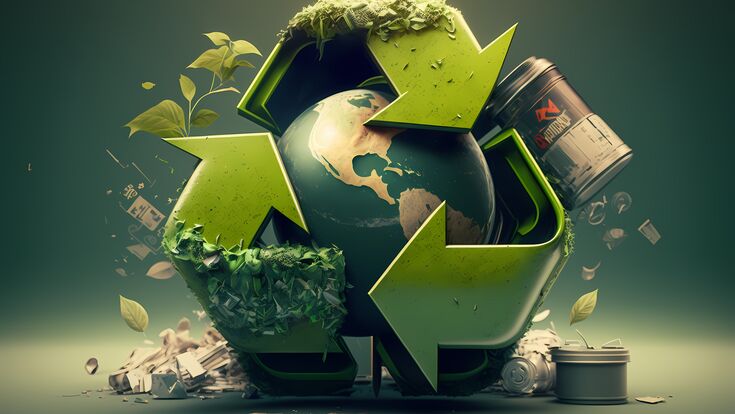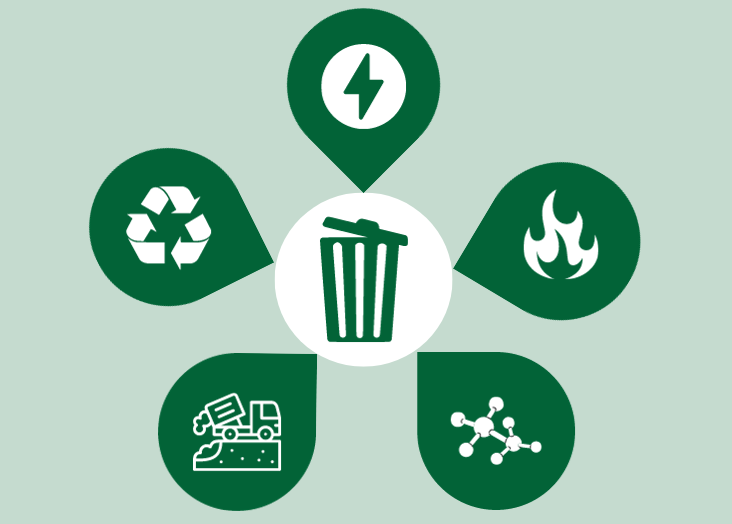Just How Recycling Lives Services Help Reduce Ecological Impacts
Just How Recycling Lives Services Help Reduce Ecological Impacts
Blog Article
Checking Out Different Sorts Of Waste in Modern Waste Administration Solution
The modern landscape of waste monitoring involves navigating a complicated variety of waste kinds, each requiring specialized handling and disposal approaches to reduce environmental effects. Metropolitan solid waste, unsafe waste, digital waste, and natural waste each existing unique difficulties and chances for resource recovery. Ingenious solutions such as wise waste bins and waste-to-energy innovations are becoming critical devices in boosting performance and sustainability. Recognizing these waste kinds is necessary for promoting public understanding and encouraging active engagement in lasting methods. What methods can efficiently deal with these varied kinds of waste while advertising a round economic climate?
Local Solid Waste
Metropolitan solid waste, frequently described as home trash or rubbish, includes a selection of disposed of products produced by residential, business, and institutional sources within a district. This waste stream usually includes products such as product packaging, food scraps, backyard trimmings, paper, plastics, textiles, and thrown out home items. The administration of metropolitan solid waste is a critical element of city planning and public wellness, necessitating reliable collection, transportation, and disposal systems.
Effective waste administration systems are created to decrease environmental influence while taking full advantage of source recuperation. Composting organic waste, such as food scraps and lawn trimmings, not only minimizes garbage dump use yet likewise creates useful dirt changes.
Towns have to also resolve the financial and logistical challenges associated with waste management. Implementing pay-as-you-throw systems, enhancing public understanding, and purchasing innovation can substantially boost waste diversion prices. By integrating these practices, districts can cultivate lasting neighborhoods, minimize greenhouse gas discharges, and conserve natural deposits.
Hazardous Waste

Reliable dangerous waste administration entails several important actions: identification, therapy, disposal, and partition. Recognition requires the classification of waste based on its dangerous buildings. Partition ensures that dangerous materials are saved independently from non-hazardous waste to avoid cross-contamination. Therapy techniques, such as chemical neutralization, incineration, and stabilization, are utilized to minimize the toxicity, volume, or flexibility of the waste. Finally, disposal choices, consisting of safe and secure landfills and below ground storage, are picked to ensure long-term containment.
Regulatory frameworks, such as the Resource Preservation and Healing Act (RCRA) in the United States, provide standards and requirements for dangerous waste management. Adherence to these regulations, paired with improvements in waste treatment technologies, is crucial in alleviating the dangers connected with contaminated materials.
Electronic Waste
Digital waste, typically referred to as e-waste, represents a quickly expanding challenge in waste administration systems internationally. This sort of waste encompasses disposed of electronic tools and equipment such as smart devices, computers, tvs, and other digital home appliances. The quick speed of technical improvement, coupled with reducing item life expectancies and customer demand for the most current devices, has actually exponentially boosted the quantity of e-waste produced yearly.
E-waste is particularly bothersome due to its complicated try this website make-up, frequently having hazardous compounds like mercury, lead, and cadmium, which posture significant environmental and wellness threats if not appropriately taken care of. Conversely, e-waste also consists of beneficial products such as gold, copper, and silver, which can be recuperated and reused. The twin nature of e-waste-- both hazardous and important-- requires customized handling, reusing, and disposal processes.
Effective e-waste monitoring includes rigid regulative structures, durable collection systems, and progressed reusing innovations. Public understanding and involvement are vital, as inappropriate disposal techniques, such as prohibited unloading and casual visit our website recycling, aggravate environmental contamination and wellness dangers. As a result, enhancing e-waste monitoring practices is essential for reducing ecological impact and recovering valuable sources in a significantly electronic world.

Organic Waste
Organic waste, comprising kitchen area scraps, yard trimmings, and farming residues, represents a substantial portion of the international waste stream. This kind of waste is eco-friendly, implying it can be damaged down by microorganisms into less complex organic substances. Regardless of its capacity for all-natural decomposition, incorrect monitoring of organic waste can cause adverse environmental influences, including the exhaust of greenhouse gases such as methane, which add to environment change.
Efficient monitoring of organic waste is critical for reducing these ecological influences (recycling lives services). Composting is a commonly taken on method, changing organic waste right into nutrient-rich compost that can enhance soil health and wellness and farming performance. Additionally, anaerobic digestion is an emerging innovation that transforms natural waste right into biogas, a renewable energy source, and digestate, which can be utilized as plant food
Municipalities and waste administration entities should implement robust organic waste collection and treatment programs to make best use of the advantages of these processes. Public education campaigns can also play a critical duty in encouraging households and companies to separate organic waste from other sorts of waste. By prioritizing the management of organic waste, cultures can reduce land fill usage, reduced greenhouse gas exhausts, and develop useful by-products for farming use.

Cutting-edge Waste Administration
In the world of waste monitoring, innovative methodologies are transforming how societies handle their refuse, going for sustainability and effectiveness. These improvements incorporate an array of modern technologies and techniques that boost reusing prices, lower land fill dependence, and reduced ecological effect. One famous advancement is the application of wise waste bins geared up with sensors that monitor fill levels and maximize collection courses. This not just minimizes fuel consumption but also decreases greenhouse gas discharges.
An additional remarkable advancement is the fostering of waste-to-energy (WtE) modern technologies. By converting non-recyclable waste into functional energy via procedures such as incineration and anaerobic food digestion, WtE reduces landfill worry and supplies a renewable resource source. Advancements in chemical recycling here are the findings permit for the break down of complex plastics into their initial monomers, allowing the production of new, high-grade plastic products.
In addition, the circular economic climate model is getting grip, emphasizing the style of items and systems that prioritize reusability and source performance. This holistic technique encourages markets to decrease waste generation from the outset. With these cutting-edge strategies, contemporary waste monitoring systems are not only attending to the prompt challenges of waste disposal however additionally leading the way for an extra lasting future.
Verdict
A detailed understanding of local solid waste, contaminated materials, digital waste, and organic waste, paired with the implementation of innovative waste management options, is imperative for minimizing environmental effects. Integrating innovations such as wise waste bins and waste-to-energy systems can enhance efficiency and sustainability. Efficient waste management strategies not just foster source recuperation yet likewise advertise public recognition and engagement, eventually adding to the growth of a round economic climate.
The modern landscape of waste administration includes navigating a complex array of waste types, each calling for specialized handling and disposal approaches to minimize ecological effects. Community solid waste, hazardous waste, digital waste, and natural waste each present distinct challenges and possibilities for source healing.Digital waste, frequently referred to as e-waste, represents a rapidly expanding obstacle in waste administration systems worldwide. Through these cutting-edge methods, contemporary waste management systems are not just attending to the immediate obstacles of waste disposal however also leading the method for a more lasting future.
A detailed understanding of municipal strong waste, dangerous waste, electronic waste, and natural waste, coupled with the execution of ingenious waste monitoring options, is crucial for reducing ecological impacts. (recycling lives services)
Report this page